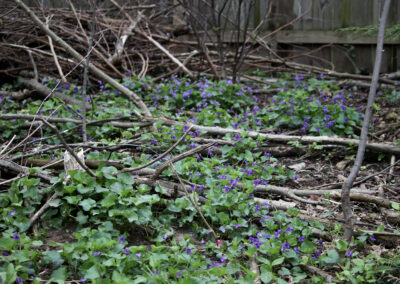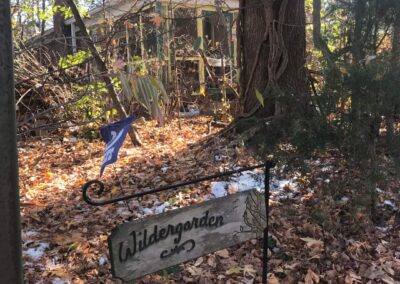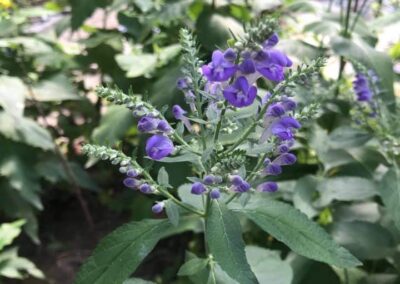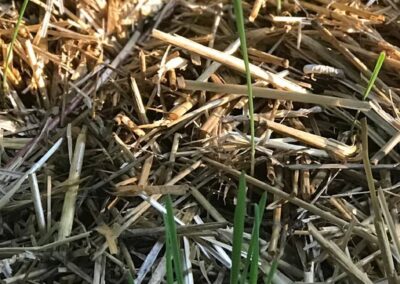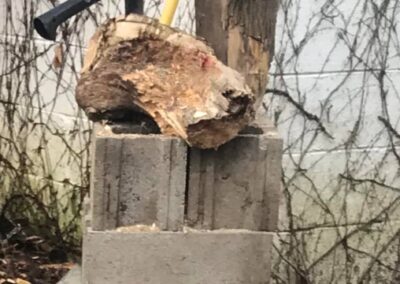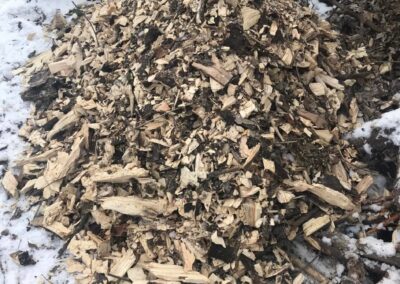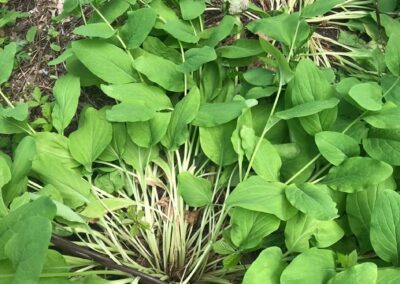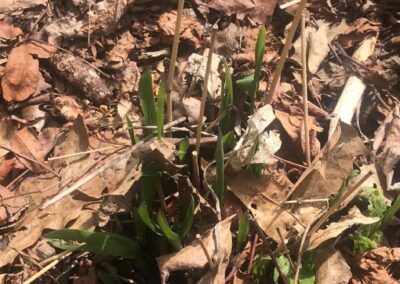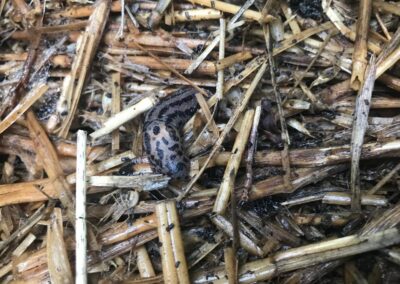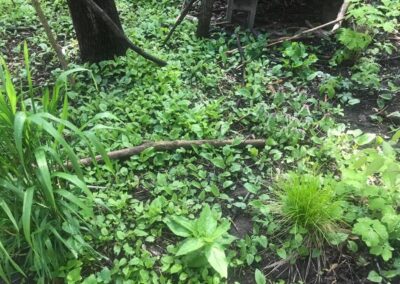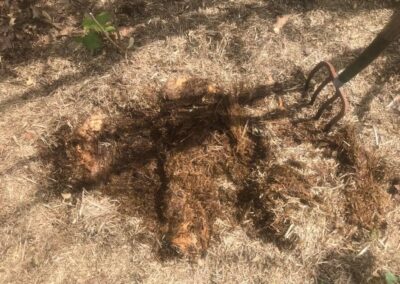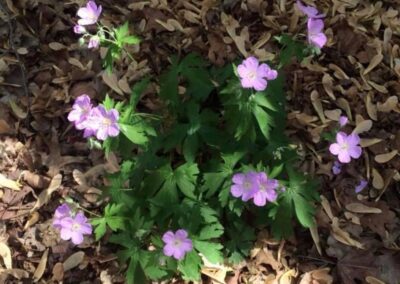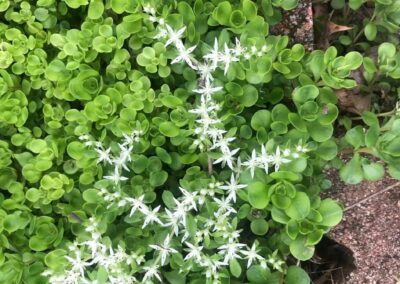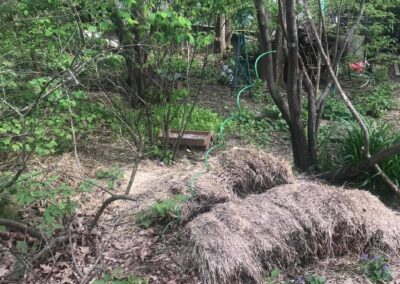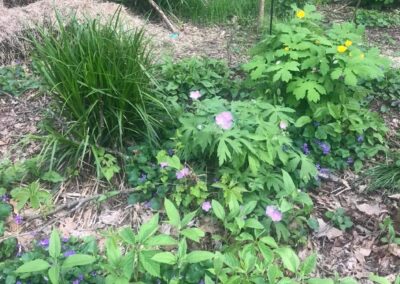GROUNDCOVER
What to do instead of sod grass?
Ground cover shifts with the seasons, so it is important to be mindful of groundcover management.
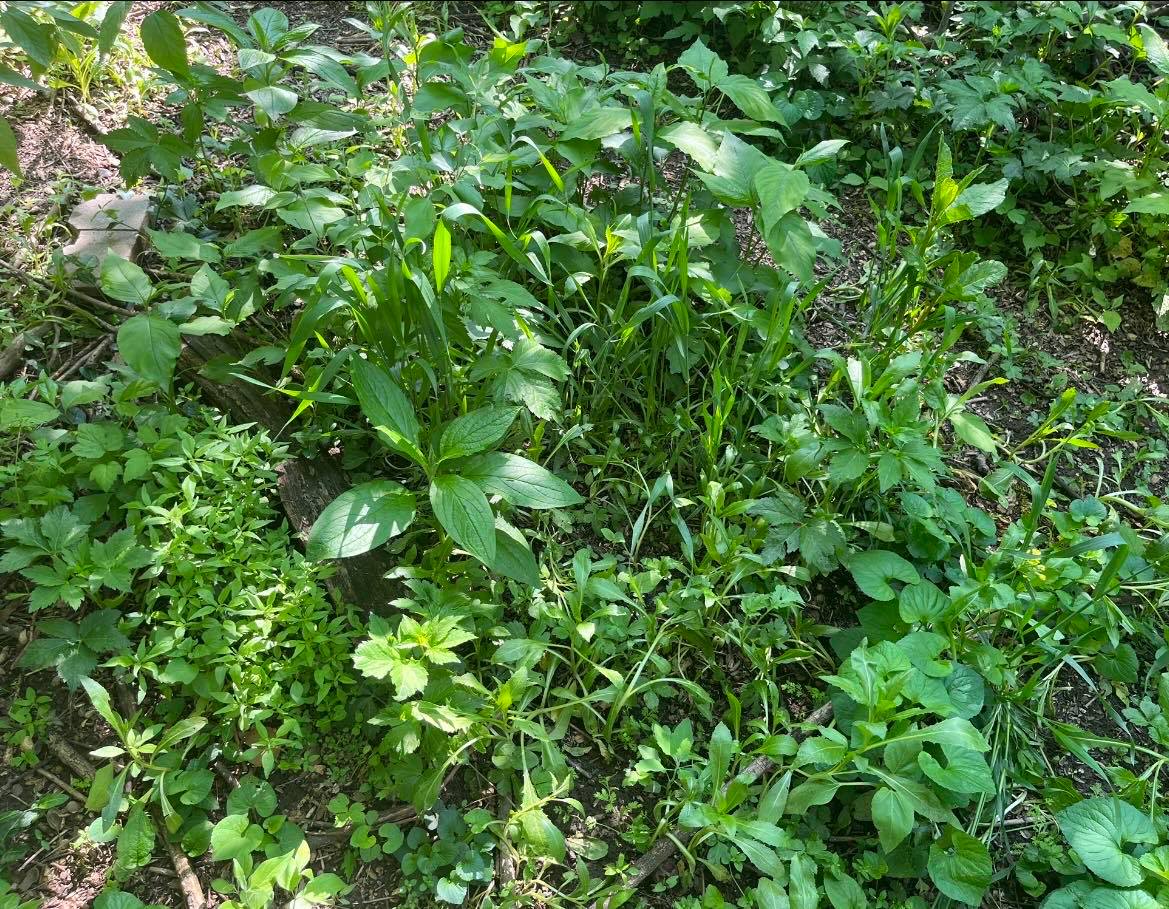
The primary form of soil covering is the growing plants themselves:
- Nature chooses the location for many of our plants, so they are not in rows or in measured spacing, increasing the effectiveness of the coverage.
- When trees in season are holding their leaves, ground cover is most complete. This makes maximum use of sunlight energy, since most sunlight is used in wide-leaf photosynthesis, rather than falling on a brown surface.
- Leaves slow the velocity of falling raindrops, which increases rainwater infiltration into the soil.
- Plant roots also provide groundcover, holding soil in place and preventing erosion into local streams.
A second, and crucial, ground cover is plant litter, since it is best to never have bare soil:
- This is more controversial, as it can look messy until a person learns to appreciate and enjoy the benefits, as well as the look, but it is key to embracing sustainability.
- The plant litter covering includes fallen leaves, seed pods, nuts, fallen tree trunks and branches, sticks, plant stems, wood chips, and straw.
- Litter on the ground maintains a moist soil environment.
- The bottom layer of the debris is decaying and feeding soil organisms, which increases soil health.
Local rocks are a valuable supplementary form of ground cover:
- Although they do not play a direct role in building healthy soil, local rocks of different sizes add valuable ground cover.
- They are also key to augmenting beneficial insect habitat.

